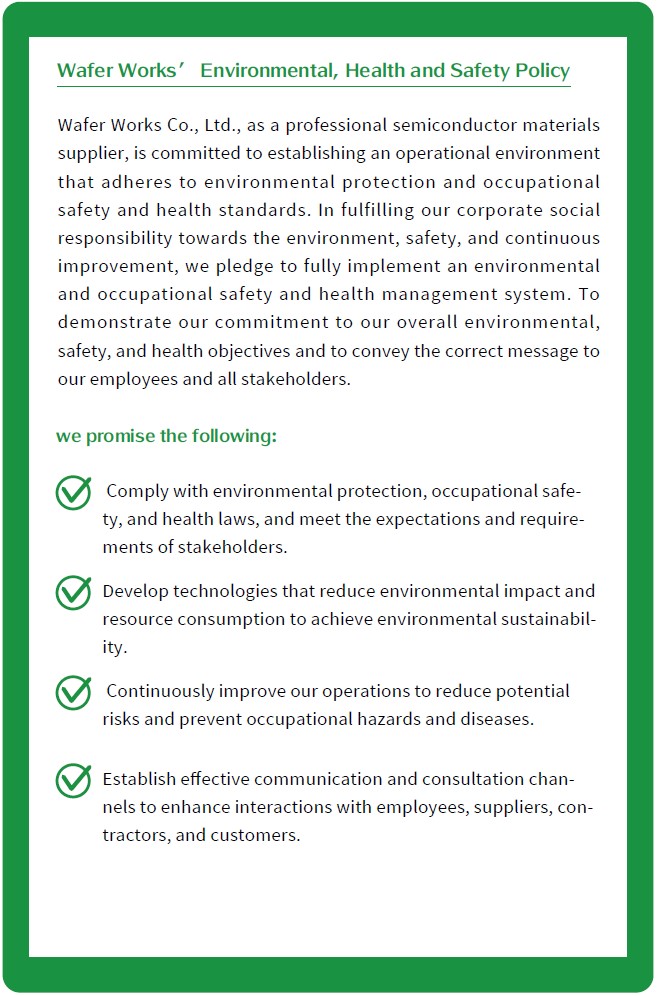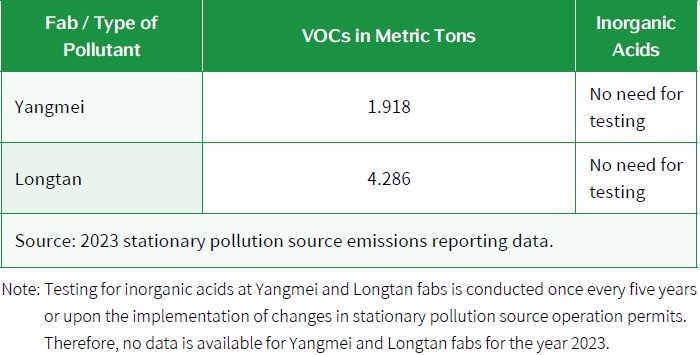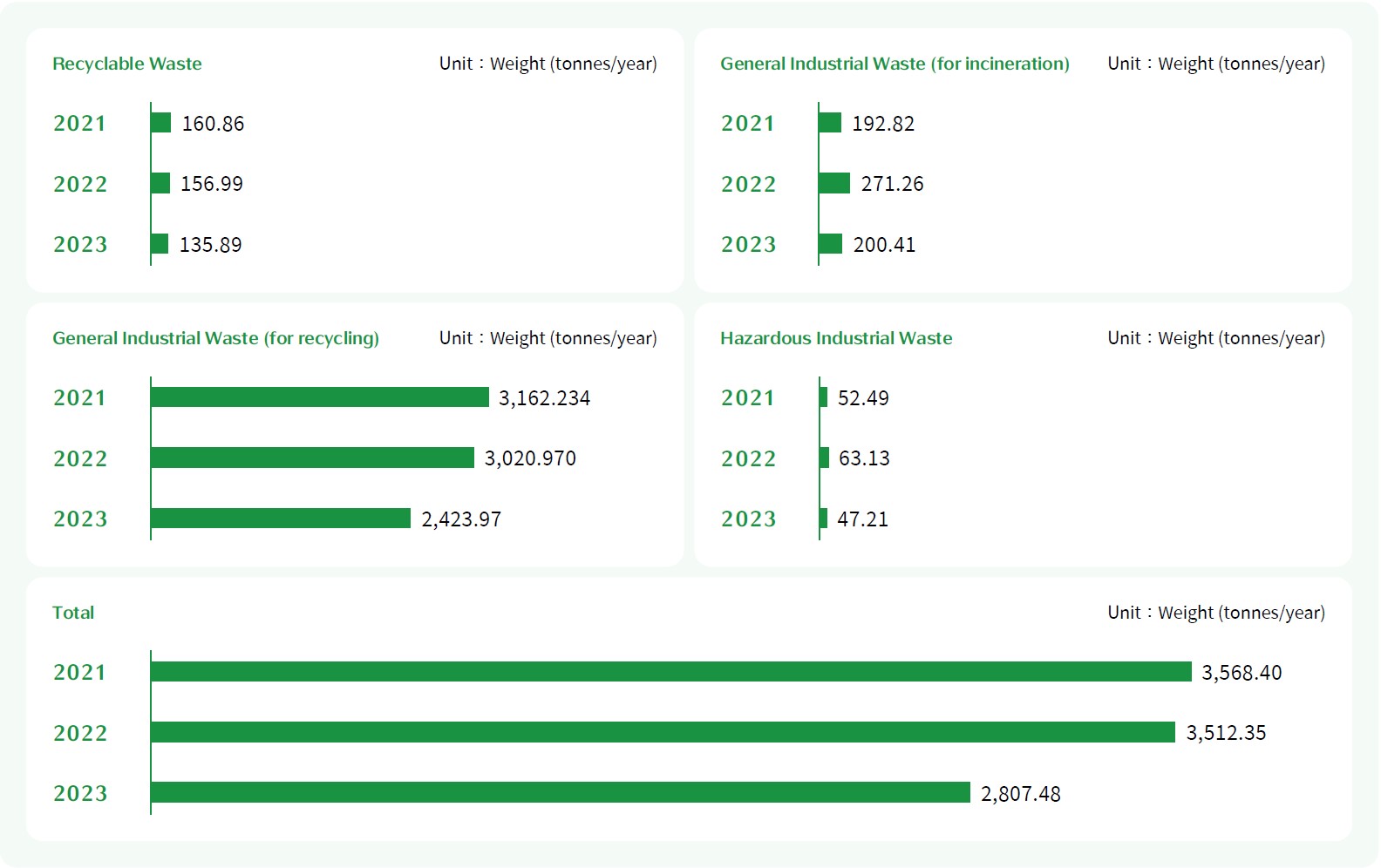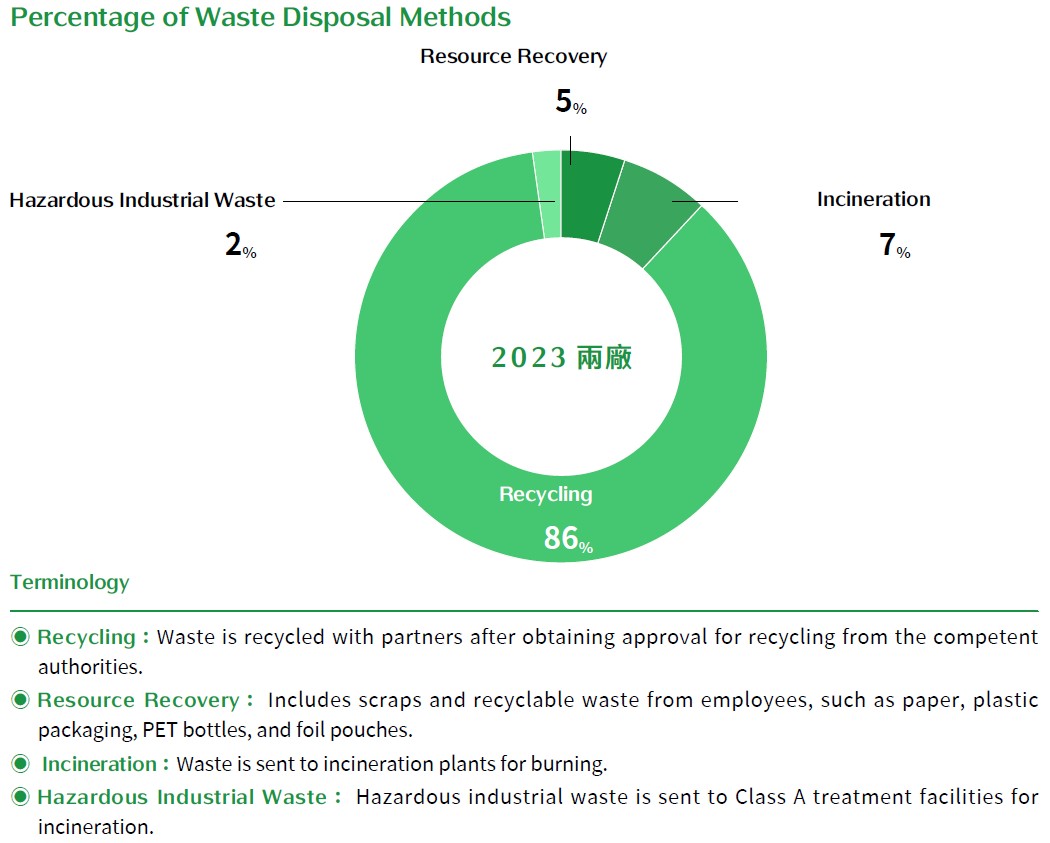Environment, Health and Safety Policy

Wafer Works has established operation and maintenance procedures for air pollution control, water pollution prevention, and waste management. Relevant departments strictly adhere to these procedures to ensure all facilities operate at maximum efficiency. Various monitoring systems are installed at the discharge points of pollution control facilities. If monitoring values exceed alarm thresholds, operators will follow emergency response and notification procedures to address the issue immediately.
Each year, we carry out emergency response drills for air and water pollution control and enhance internal environmental awareness to prevent environmental pollution and legal violations. Under this comprehensive pollution control monitoring and management system, Wafer Works did not contravene any environmental regulations from 2021 to 2023.

Air Pollution Control
Wafer Works' strategy for air pollution control starts by optimizing processes to minimize the introduction of pollutants into exhaust gases. Subsequently, high-efficiency equipment is deployed to treat pollutants within the exhaust, guaranteeing compliance with government standards regarding the level of pollutants emitted into the atmosphere. Wafer Works classifies emissions into alkaline exhaust, acidic exhaust, and volatile organic compounds (VOCs). The air pollution control equipment varies based on the type of pollutants being
treated, and all emissions comply with the regulations set by the Environmental Protection Administration. Wafer Works also prioritizes the rights of neighboring companies and community residents. All equipment operations are centrally monitored by staff on a 24-hour rotating schedule. Continuous monitoring devices are installed to track VOC emission concentrations. Any variations in operating conditions are under constant monitoring, and if they deviate beyond the preset limits, an immediate alert is sent out.

Circular Economy and Waste Management
Wafer Works adheres to a circular economy reuse model focused on waste reduction at source and circular economy. In 2021, we achieved BS 8001 circular economy certification (SGS verification) and obtained commercial model maturity - optimization. Recycled scrap constituted 21.21% of total production capacity, while recycled ingot head and tail materials and pot scraps made up 20.32% of total input. In 2023, we maintained these operational performances, continuing our efforts in waste reduction and recycling.
Wafer Works has a comprehensive waste treatment and recycling mechanism. General waste is transported by certified waste management companies to government-designated incinerators. Industrial waste, such as sludge and oily sludge, is sorted, collected, and handed over to local certified waste management operators. Wafer Works classifies waste into recyclable waste, general industrial waste for incineration, and general industrial waste for recycling. The waste output for 2021 to 2023 is shown in the following table:

Wafer Works produces several types of industrial waste: general industrial waste, hazardous industrial waste, empty chemical containers, and recyclable waste. All waste is stored and transported according to legal regulations.
The methods for disposing of industrial waste at Wafer Works are as follows: 86% recycling, 9% incineration, and 5% resource recovery. Please refer to the waste disposal method distribution chart for detailed information. Wafer Works focuses on reducing pollution and managing waste through recycling initiatives. The primary source of hazardous industrial waste is empty chemical containers that contain chemical materials during the manufacturing process. These containers undergo regular annual audits, and each waste shipment is tracked with manifests to collect and monitor related data. The 86% recycling rate includes both general and hazardous industrial waste. In 2023, Wafer Works managed hazardous industrial waste, including empty chemical barrels, through a partnership with recycling processors. The process involves cleaning, neutralization, testing, certification, shredding, and recycling the plastic, with approval from regulatory authorities.

